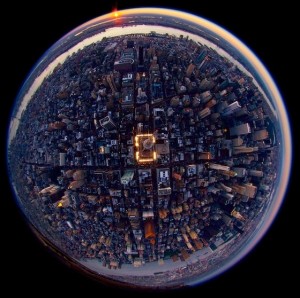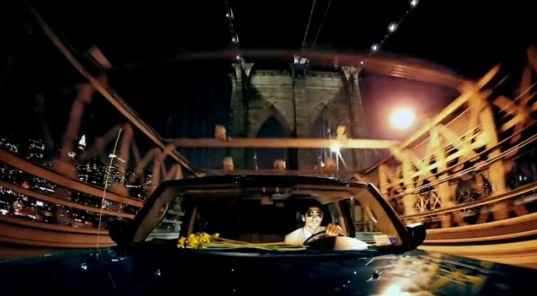Bueno, pues por fin ya tenemos a la venta la famosa videocámara en formato micro cuatro tercios de Panasonic: la AG-AF100. Seguramente recordaréis que ya hablamos de ella por aquí con anterioridad, pero hasta ahora no se ha conocido la fecha de venta definitiva.
La buena noticia es que ya no hay que esperar más, puesto que ya debe estar disponible en tu distribuidor de material broadcast preferido. Ha salido a la venta tanto en Europa como en Estados Unidos, por lo que no será difícil de conseguir. Con un precio de venta de unos 4350€ (sin IVA), puede convertirse en una opción interesante para profesionales de la imagen y el vídeo.
Recordaros que permite la utilización de lentes intercambiables, mediante su montura micro cuatro tercios, así como todo tipo de lentes fotográficas Nikon, Canon, etc mediante adaptador. Equipada con un sensor MOS de 4/3 de pulgada y filtros ND, cumple con todas las exigencias para poder operar en un entorno profesional. Se completa el equipo con tomas de audio profesional XLR, salida de vídeo HD-SDI y capacidad de grabar incluso en formato 1080p24. Eso sí, utiliza un codec bastante extraño para una cámara que se le supone profesional: AVCHD, que no es precisamente lo mejor en muestreo de color. De todas formas, Panasonic afirma haberla dotado de una versión profesional (PH) con bitrate de hasta 21Mbps de media.
No se por qué, pero con estas características … me da a mi que no le llega ni a la altura del zapato a la nueva F3 de Sony. Tiempo al tiempo….
Mercadotecnia, Publicidad, Videos y Contenidos con Inteligencia y Servicio
31 dic 2010
Ya a la venta la micro cuatro tercios AG-AF100 de Panasonic en Hiperdef (1080p)
30 dic 2010
My Gear: Lenses « Vincent Laforet’s Blog
LENSES
I’ve included some screen shots from two of my short films to go along with the lens descriptions and opinions – from both Reverie and Nocturne. I’ve also included some still images from my website/ still portfolio so that you can get a better idea of the lenses I chose to use for each shot. I recommend that you load both films (linked above) and watch them to see how the lenses were used within each cut.
Every photographer and cinematographer has some pretty specific opinions about their lenses- and no two will ever agree on which three they’d choose if they were forced to pick a maximum of 3-4 one day.
These are the lenses I most commonly use – and I’ll try to explain when and why I use them. Your choice of lens is one of the most important decisions you’ll ever make as a photographer, cinematographer or director.


7.5mm f/5.6 – FishEye Lens VL: This is a specialty lens that makes a circular image on your rectangular frame / sensor. You use it once or twice a year- and it always leads to stunning images.
Description (from Canon): This lens is one of the most compact circular-image fisheye lenses available today… Focusing is unnecessary because of the inherently great depth-of-field of this focal length.


14mm f/2.8 – Series II Lens B&H Mfr. Site VL: This is a gorgeous lens – and perfect for cinema – especially for interiors offering an incredible field of view without any circular distortion. It is a must have for any 1D MKIV or 7D owner who need to go wide (whereas a 5D MKII user can rely on the 16~35mm to get the same frame given the larger sensor on the camera.) Be careful with this lens – distortion is your enemy on tilts up or down – it’s a dangerous lens when you don’t pay careful attention to minimizing distortion.
Description (from Canon): This new lens features completely redesigned optics including 2 high-precision Aspherical elements and two totally new UD-glass elements. The result is superior image quality: better contrast and sharpness at the outer edges, and a reduction in chromatic aberrations that can sometimes be seen with high-resolution digital SLRs. Its diagonal angle of view is an impressive 114″-anything larger would be a Fisheye lens.
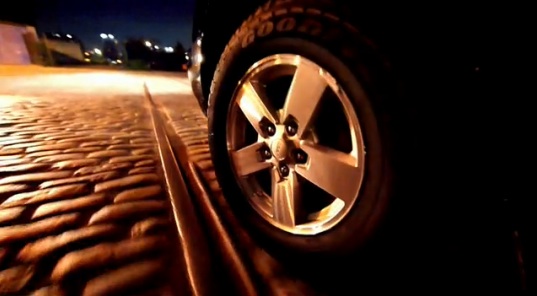


15mm f/2.8 – FishEye Lens B&H Mfr. Site VL: I have a love/hate relationship with this lens. It’s a great lens for a 7D – but on a 5D MKII can quickly become very gimmicky all too quickly. That being said – if you use it very carefully (see below) you can minimize the circular distortion so that most won’t notice it. That being said – a lot of people use this lens FOR the distortion – it makes things look more “hip” or “young” – but PLEASE never take a portrait with this lens or anything wider than a 24mm!
Description (from Canon): Fisheye lens with a 180º angle of view for unique and intriguing effects. The wide depth of field makes it even more interesting. The short minimum focusing distance of 8 in. (20 cm) gives new meaning to close-up shots. The lens has a fixed petal-type hood and a gelatin filter holder at the rear.
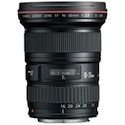

16-35mm f/2.8 – Series II Lens B&H Mfr. Site VL: When I used to shoot with 1D series camera (with the 1.3x crop factor) this was a go to lens. Then I switched to full frame sensors and put this lens away for quite awhile in favor of the 24~70mm 2.8. Now this lens is a new favorite for wide shots on the full frame sensors in cinema.
Description (from Canon): The EF 16-35mm f/2.8L II USM is a high performance, water-resistant, and ultra wide-angle Canon L-series lens. It has been specifically designed for improved edge-to-edge image quality that will meet the strict requirements of professional and high-end amateur photographers. It features 3 high-precision aspherical lens elements, each of a different type: ground, replica and GMo for even better image quality than the original EF 16-35mm f/2.8L USM.
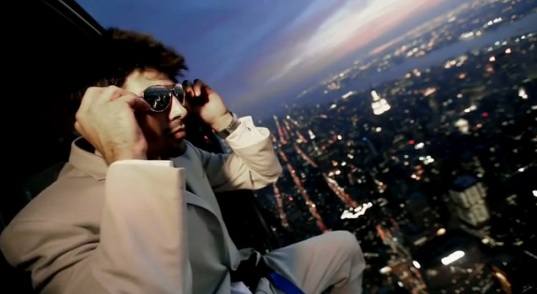
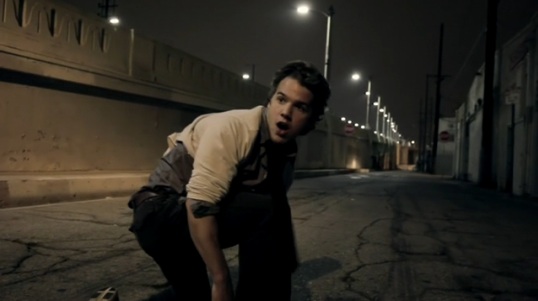
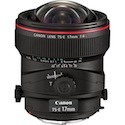

17mm f/4 – TS-E Lens B&H Mfr. Site VL: This is an incredible lens for architecture – and if you need to minimize distortion in a wide field of view. It is a bit too wide to obtain a nice “miniature” tilt-shift effect.
Description (from Canon): The widest tilt-shift lens in Canon’s lineup, the new TS-E 17mm f/4L lens expands shooting possibilities exponentially on EOS Digital cameras. Designed with UD glass to minimize and compensate for chromatic aberrations, with a specially coated aspherical element for the highest possible glare-free image quality, this tilt-shift lens offers a diagonal angle of view of 104° on a full-frame SLR camera.
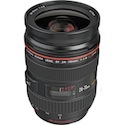

24-70mm f/2.8 Lens B&H Mfr. Site VL: If you need to buy ONE lens to start your still or film career.. well this is it. End of story. This range (on a full frame sensor) covers almost every single “classic” focal lenght – from 24mm, 28mm, 35mm, 50mm and 70mm (which is the only non-standard one…) It’s the perfect travel lens, the perfect sports lens, the perfect aerial lens, the perfect photojournalism lens, the perfect full body portrait lens – I think you get the picture – along with the 70~200mm 2.8 it’s one of two lenses that almost every single photographer in the world owns. It’s a great range for the beginning filmmaker as well – but is quite difficult to focus or set marks with given about a 1-2 inch rotation between macro and infinity. It is a GREAT macro lens too by the way – making it even more versatile.
Description (from Canon): This new lens does what many pros thought couldn’t be done – replace the previous L-series 28-70 f/2.8 lens with something even better. Extended coverage to an ultra-wide-angle 24mm makes it ideal for digital as well as film shooters, and the optics are even better than before with two Aspherical elements and a totally new UD glass element. It’s now sealed and gasketed against dust and moisture, and a new processing unit makes the AF faster than ever.
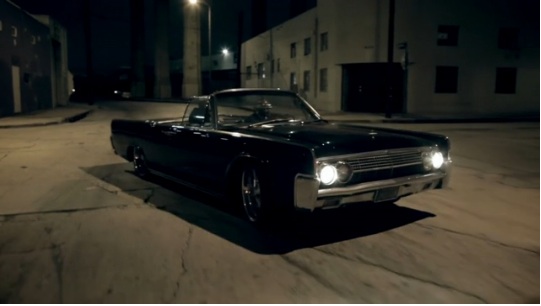
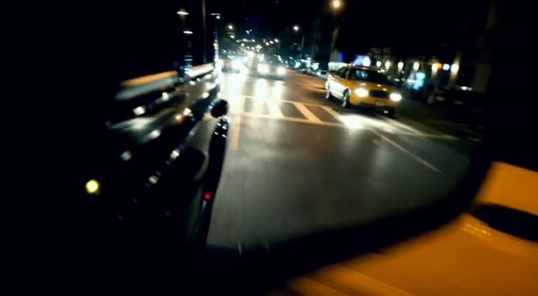


24-105mm f/4 – IS Lens B&H Mfr. Site VL: This lenses is basically the 24~70mm 2.8 that is 35mm longer making it a much better portrait lens but with a 1-stop loss in light (f4 vs f2.8.) That being said it has Image Stabilization built in – which is nice. Personally – I’ll take the f 2.8 24~70mm over this lens any day. But I have many photographer friends (including Walter Ioss Jr.) who SWEAR by this lens.
Description (from Canon): This easy-to-use standard zoom lens can cover a large zoom area ranging from 24mm wide-angle to 105mm portrait-length telephoto, and its Image Stabilizer Technology steadies camera shake up to three stops. Constructed with one Super-UD glass element and three aspherical lenses, this lens minimizes chromatic aberration and distortion. The result is excellent picture quality, even at wide apertures. Canon’s ring-type USM gives silent but quick AF, along with full-time manual focus. Moreover, with dust- and moisture-resistant construction, this is a durable yet sophisticated lens that meets the demands of advanced amateur photographers and professional photographers alike.
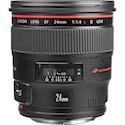

24mm f/1.4 – Series II Lens B&H Mfr. Site VL: This is a very nice bright wideangle lens – that will allow you to photograph with almost two more stops of light than most zooms. A great photojournalism lens.
Description (from Canon): Professional wide-angle lens with an ultra-large maximum aperture of f/1.4. This is the first EF lens to employ both a replicated Aspherical lens element to suppress distortion and spherical aberration, and a UD lens element to correct lateral chromatic aberration. Thanks to the floating construction, excellent corner-to-corner delineation is attained from 10 in. (25 cm) to infinity.

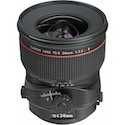

24mm – TS-E Lens B&H Mfr. Site VL: This is one of my favorite two Tilt-Shift lens. I use it to obtain a “miniature effect” and rely on this lens and the 45mm Tilt-Shift lens for the most part. I love this lens. Remember – NO AF though!
Description (from Canon): A superb refinement to a true Canon classic, the new TS-E 24mm f/3.5L II offers enhanced functionality and image quality in its most popular tilt-shift focal length. Designed with UD glass to minimize and compensate for chromatic aberrations and a specially coated aspherical element for the highest possible glare-free image quality, this tilt-shift lens features an angle of view of 84° on a full-frame camera.
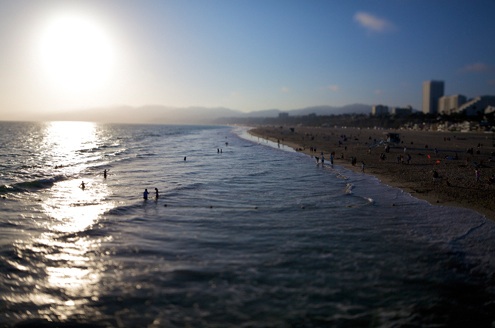


35mm f/1.4 Lens B&H Mfr. Site VL: The 35mm is THE CLASSIC photojournalism lens – as defined by Henri Cartier Bresson. You can spend you entire career with this lens set at f 2.0 and a 50mm 1.2 set a f 2.0 and roam the globe (and shoot at f 2.0 in BROAD DAYLIGHT – not just at dusk or at night.) You won’t have the versatility of a zoom lens of course – but your images will stand out from the rest. See the work of Tyler Hicks, Damon Winter, Todd Heisler (all of The New York Times) & Mario Tama (of Getty Images) and how they use these lenses with this technique to separate the way their images look relative to the competition. You need to nail the focus and position yourself perfectly – but when you do – you SMOKE the competition. This is of course a fantastic lens in low light of course – giving you nearly two more stops than the 2.8 wideangle zooms.n
Description (from Canon): L-series professional f/1.4 wide-angle lens with an Aspherical lens element to correct aberrations. The floating system enables high picture quality to be obtained over the entire focusing range. Autofocusing is quick and quiet with rear focusing and ring USM. Full-time manual focusing is also possible.
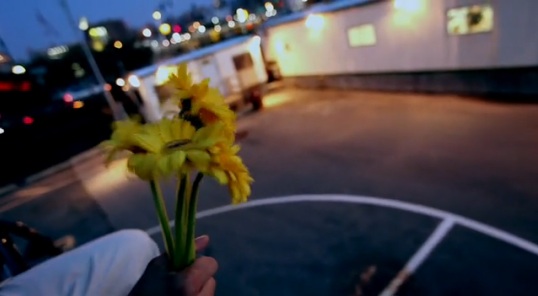


45mm TS-E Lens B&H Mfr. Site VL: This is one of my favorite two Tilt-Shift lensese. I use it to obtain a “miniature effect” and rely on this lens and the 24mm Tilt-Shift lens for the most part. I love this lens – it’s incredibly sharp as a standard lens too btw. Remember – NO AF though!
Description (from Canon): Normal lens featuring tilt and shift movements. The floating system and rear focusing give sharp and stable delineation from 1.3 ft. (0.4m) to infinity. The 45mm focal length is ideal for obtaining a natural-looking perspective.
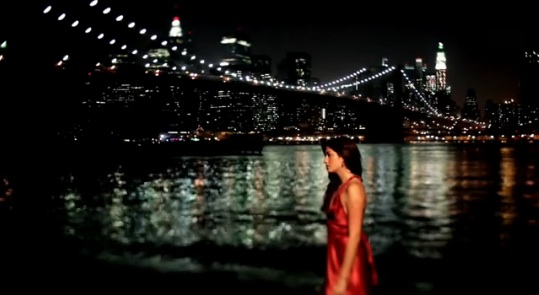

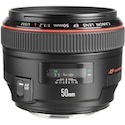

50mm f/1.2 Lens B&H Mfr. Site VL: This is pretty much a MUST have lens for any HDDSLR filmmaker – I’d recommend it as part of any standard kit. The 50mm range in film on a full frame sensor is perfect for tighter wide shots, and for loose portraits. Perfect for dialogue scenes. Used with care it can be an incredible photojournalism lens as well – not to mention portrait lens (see the 35mm 1.4 description above.) Obviously – it’s a fantastic longish lens to shoot in very dark areas…
Description (from Canon): The EF 50mm f/1.2L USM is a peerless new standard lens featuring an ultra-large aperture for a narrow depth of field and soft background blur so loved by photographers everywhere. The EF 50mm f/1.2L USM is suitable for any shooting situation; its lens coating and construction are optimized to minimize the ghosting and flare that frequently occurs when lenses are used with digital cameras. This high-performance, weather-resistant lens delivers all the superb image resolution and contrast you expect in a Canon L Series Lens.

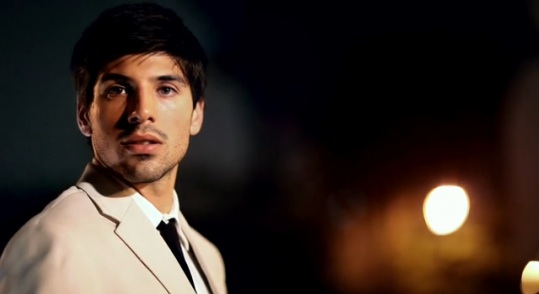


70-200mm f/2.8L IS II USM B&H Mfr. Site VL: This is another one of the mainstay lenses – along with the 24~70mm 2.8 lens. This is the second MUST HAVE lens for any photographer and filmmaker. With these two lenses – you can literally cover the world. I’ve made a high percentage of my best images of my career with this lens and would recommend it to everyone. Buy the 24~70mm 2.8 first – and then this one. And then you can start buying the specialty lenses you see that surround these two lenses on this page. This is one of the sharpest zoom lenses in the world.
Description (from Canon) : The pinnacle in Canon’s constant-aperture telephoto zoom lenses, the 70-200mm f/2.8 L “IS” lens is an incredible optic with robust design and tacksharp results. Second-generation Image Stabilization responds in as little as 0.5 seconds, while providing stabilization that is three times as handholdable as a normal lens. IS now automatically deactivates when on a tripod by sensing non-movement of the camera and lens, also conserving battery power. An entirely new optical formula produces images that are superior to even its highly regarded predecessor, the 70-200mm f/2.8 L, despite having more reflective surfaces within the lens.
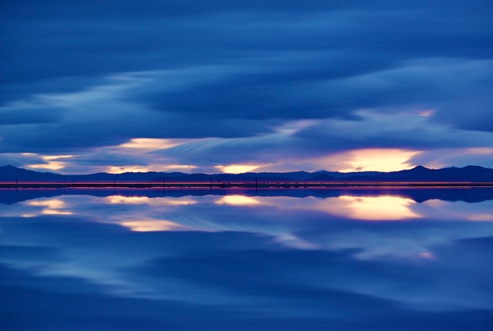
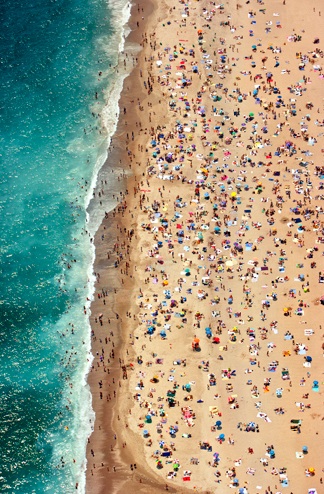
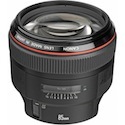

85mm f/1.2 Lens B&H Mfr. Site VL: This is a jewel – not a lens. Shot wide open or at f 2.0 – it leads to stunning portraits or “cowboy” shots in film. It’s simply stunning and you should never shoot it over f 2.0 (if you shoot at f 2.8 you might as well have the versatility of the 70~200m 2.8 above and faster AF speed and range not to mention IS.) I try to never leave for an assignment without this lens. If you want to make stunning portraits of your children or family – let alone professional headshots – this is the lens for you. It’s a bit of an indulgence – but like I said: it’s a jewel.
Description (from Canon): Retaining the impressive optical performance and large aperture of the original EF 85mm f/1.2L USM, this new medium telephoto lens uses a Ring-type USM, high-speed CPU and optimized algorithms to achieve an autofocus speed approximately 1.8x faster than the original. The high-speed AF and circular aperture create a shallow depth-of-field that brings attention to the subject and blurs the background, which is ideal for portraits and weddings. The floating optical system, which includes an aspherical lens element, suppresses aberrations and ensures excellent imaging performance.
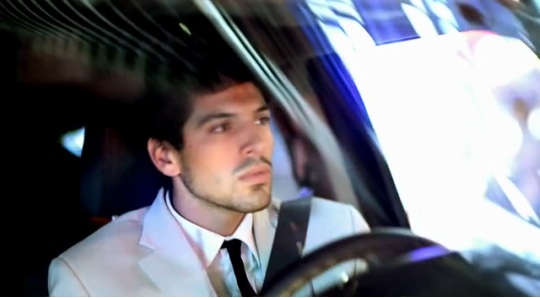

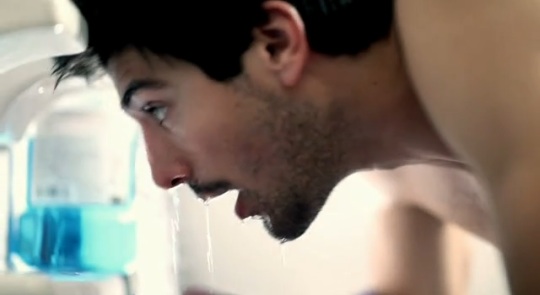
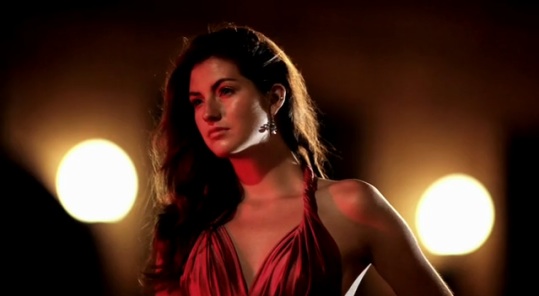


90mm f/2.8 – TS-E Lens B&H Mfr. Site VL: I don’t use this Tilt-Shift lens as often as the 24mm T/S or 45mm T/S – but when I do – it leads to some stunning images. It’s also a great portrait lens – w/o autofocus – so keep that in mind.
Description (from Canon): This is the world’s first 35mm-format telephoto lens with tilt and shift movements. Gaussian optics give high-quality delineation and true background blur. The lens is suited for a variety of subjects, from products to portraits.
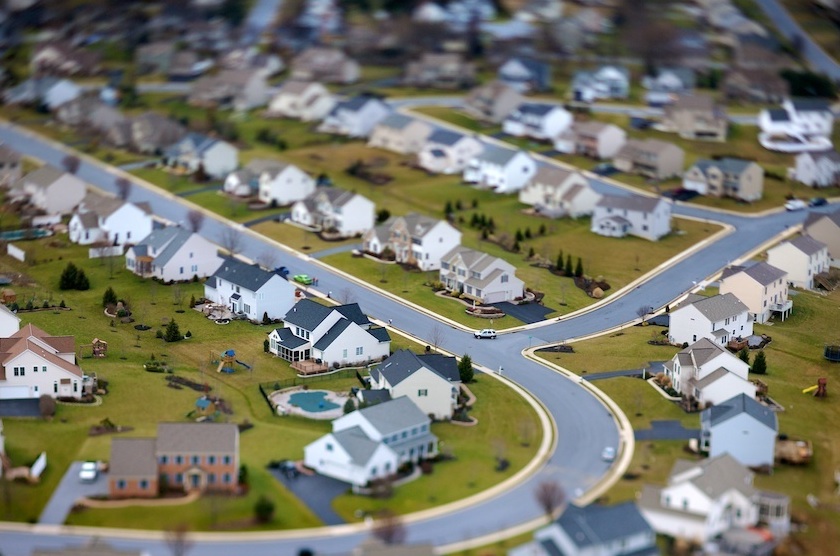
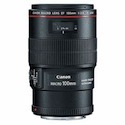

100mm f/2.8 – Macro Lens B&H Mfr. Site VL: This is a stunning Macro lens. Incredibly sharp and stunning. BUT the REAL secret with this lens is that is is the only lens to date that has the new “hybrid” IS stabilization system – which is almost like having a built-in gyro. It’s the only lens that I can operate an HDDLSR 100% handheld – the Image Stabilization is stunning. I wish they would put this new system in EVERY upcoming Canon lens. But saddly I haven’t seen this happen yet…
Description (from Canon): Canon’s newest “L” series lens is its first mid-telephoto macro lens to include Canon’s sophisticated Image Stabilization. With the highest quality optics available, combined with near-silent Ultrasonic focusing and life-size close-up capabilities without an adapter, the EF 100mm f/2.8L Macro IS USM is simply unrivalled.
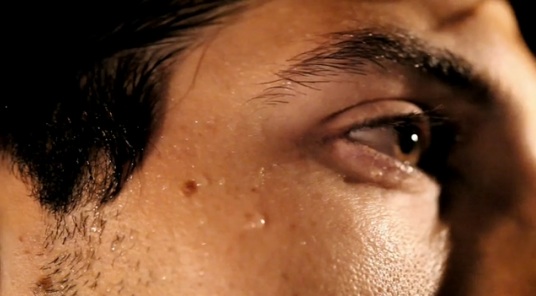
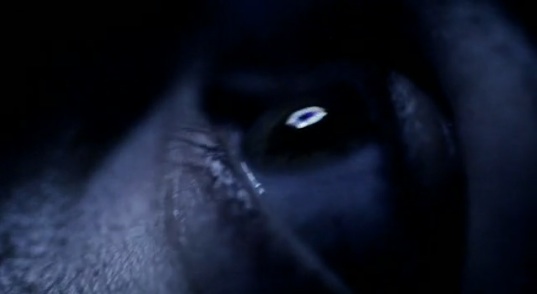
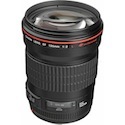

135mm f/2 Lens B&H Mfr. Site VL: This is yet another “Jewel” lens. It’s the perfect full headshot portrait lens -and it allows you to close in a bit more closely to your subject than the 70~200mm 2.8 – which allows you to make some pretty special portraits. For filmmaking – it’s one of my secret tools: not just for the obvious tight portrait – but also for great scenics where you blow out the background. I shoot this lens at f 2.0 pretty much exclusively – it is one of the sharpest lenses Canon makes. This is a lens that is optically stunning and the AF speed is excellent (and quite a bit faster than the 85mm 1.2)
Description (from Canon): The fastest 135mm telephoto lens in its class. Ideal for indoor sports and portraits with background blur. Two UD-glass elements correct secondary spectrum for outstanding sharpness and color. Compatible with Extender EF 1.4x II and 2x II.

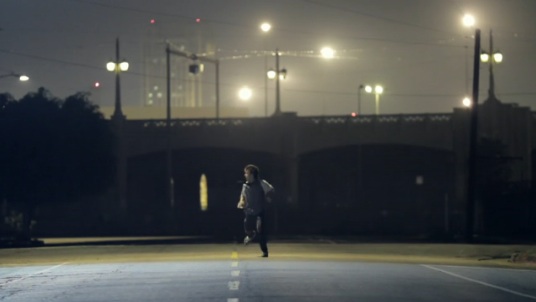



200mm f/2L IS USM Lens B&H Mfr. Site VL:Description (from Canon): This ultra-fast telephoto, a new member of Canon legendary L-series lenses, has totally new optics to provide better image quality. It uses fluorite and UD lens elements for excellent chromatic aberration correction and consists of 17 elements in 12 groups. The built-in Optical Image Stabilizer gives it up to 4 stops of stabilization correction. The inner USM and optimized AF algorithms result in fast and quiet autofocusing, and the circular aperture can even produce beautiful out-of-focus images. This ultra-high-performance lens also improves its durability – better dust- and water-proofing. The EF 200mm f/2L IS USM is outstanding for many available-light applications, including indoor sports, theater work, fashion, and candids at events.
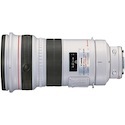

300mm f/2.8 Lens B&H Mfr. Site VL: This is a mainstay sports lens – and a go to lens for super telephoto shots in film. When I have any job that might require long lenses – I bring this and the 500mm with me everywhere. In fact I take both of them with me on every single aerial shoot.
Description (from Canon): Telephoto lens newly equipped with an Image Stabilizer enabling hand-held shooting for easier movement. The fluorite element and two UD-glass elements effectively correct the chromatic aberrations prone to occur with telephoto lenses. With the EOS-1v and EOS-3, the AF speed becomes the world’s fastest. To reduce the overall weight and enhance portability, the lens barrel and many other exterior parts use a magnesium-alloy. Also, the detachable tripod collar revolves smoothly and locks securely.

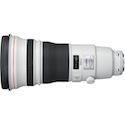

400mm f/2.8L IS II USM Lens B&H Mfr. Site VL:
Description (from Canon): The stellar combination of superlative optics, astonishing performance and brilliant construction, the EF 400mm f/2.8L IS II USM super telephoto is the professional’s choice for a long lens, and perfect for nature and wildlife photography. Over 28% lighter than its predecessor and now the lightest lens in its class, the EF 400mm f/2.8L IS II USM features Fluorite optics that deliver sharper images with less chromatic aberration, a completely redesigned Image Stabilization system that offers up to four extra stops of performance, a newly-developed Fluorine coating that keeps soiling, smears and fingerprints to a minimum, plus new construction in line with only the best that Canon has to offer. With a third Image Stabilization mode (Mode 3) that activates IS only when the shutter button is fully pressed, and giving the equivalent effect of a shutter speed four stops faster, the EF 400mm f/2.8L IS II USM allows for easy panning and is ideally positioned for professional action photography. With a new security slot for wire-type security locks, buttons and switches are redesigned for intuitive, deliberate operation, and dust and water sealing keeps the lens functioning flawlessly in even the most challenging environments.
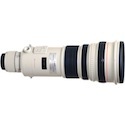

500mm f/4 IS Lens B&H Mfr. Site VL: If I had ONE long lens to pick (a super telephoto of course) this is it. The 400mm 2.8 is a bit too heavy to handhold – especially from a helicopter. The 500mm is the perfect size and weight to ship, shoot and travel with. I’m pretty much in love with this lens – and if you’re going to buy one long lens – I recommend this one hands down. I don’t think you need to worry about the 1-stop loss relative to the 400mm 2.8 as you did a few years ago – given how well the new Canon cameras perform in low light.
Description (from Canon): Next-generation super telephoto L-series lens with an Image Stabilizer, it’s one of the world’s best lenses for wildlife and nature photography. The optical system is newly designed with a maximum aperture of f/4. One fluorite element and two UD-glass elements effectively correct aberrations resulting in sharp and excellent delineation.
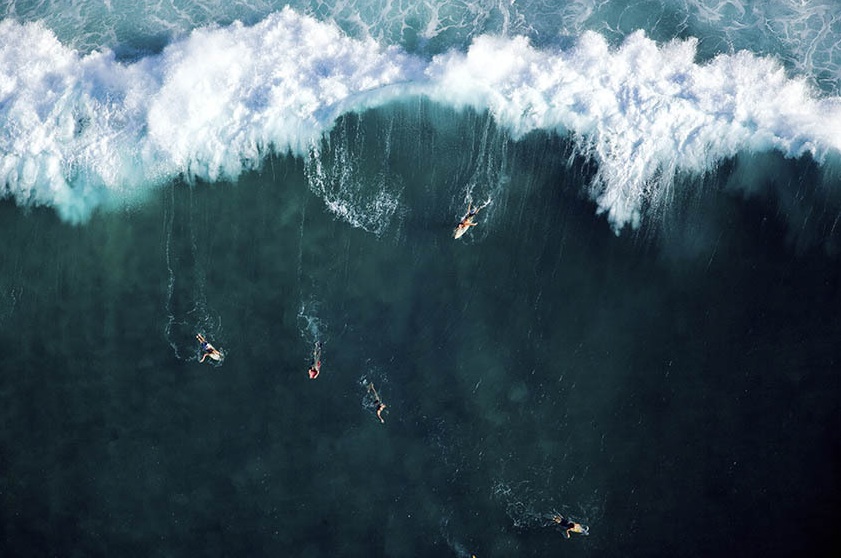

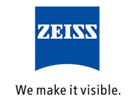
CP.2 Distagon 18mm T/3.6 B&H Mfr. Site VL: Basically – you can do just fine with Canon EF glass on many of your HDDSLR projects. The glass is great and their price an variety is hard to beat. That being said, as you move into doing more complex scenes – specifically scenes with actors that are in constant motion and don’t always hit their marks – you’ll find that the USM motors and the focus throw on the majority of Canon EF lenses is simply not reliable enough. As you move into more serious documentary and cinema type situations (where you cannot set marks ahead of time) – you’ll come to love the Zeiss CP.2 lenses for a number of reasons:
1. Basically one of the biggest factors in deciding to purchase a set of these lenses is that the focusing ring rotation on the lens is a full 300 degrees. That means that a focus puller has 300 degrees to set accurate marks when you block out a scene – not to mention very clear distance markings. You’ll see marking for 3’1″, 3’2″, and 3’3″ – that cover the same distance on the focus ring as the equivalent of 1 foot to infinity on a Canon zoom lens… as you know – a 1/4 of an inch turn on an EF lens can mean the difference between infinity and macro – making it incredibly difficult (if not impossible) to make fine adjustments especially wide open. This 300 degree movement will make your 1st AC’s (focus puller’s) life so much less stressful – and will allow you to know you can hit your focus wide open in a narrative scene. The difference between trying to pull focus on a Canon 24~70mm 2.8 EF lens and one of these prime lenses is literally night and day. Also – don’t forget that these are mechanical lenses and that they have hard physical stops at infinity and at macro. Therefore once you set a mark – it’s there to stay. If you pass infinity or the macro spot on a Canon EF USM (ultrasonic motor – ergo magnetic contact lens – there is no real physical contact between the focus ring and lens) you loose ALL of your marks – which can be DEADLY on set. I’ve also seen marks slide around a bit on EF lenses – which is not a good thing at all. Basically Canon lenses were not designed to shoot cinema – they were designed to be the best and fastest autofocus lenses in the world. Therefore you’ll find that these lenses become indispensable for any mid-high budget HDDSLR production where you need to follow moving subjects or actors. Period.
2. Each lens is geared – on both the focus ring and aperture. That’s a big deal in that you don’t need to worry about modifying your EF / Zeiss ZE /Other lenses and adding gears to them - which can be expensive and time consuming – not to mention a bit of a pain in a serious production. Also don’t underestimate the value of having a geared iris/aperture. This allows you to gradually close down or open up as you shoot – either by hand or with a motor – making it possible to start in a dark room and run out into an outdoor situation and close down on the iris fluidly… something you cannot do with EF lenses smoothly. EF lenses shift in noticeable 1/3 stop increments and doing so smoothly can be extremely difficult.
3. The quality of the glass on these lenses is exceptional – especially wide open – and very noticeably so on the edges of your frame.
4. This set of lenses is for the most part uniform in size and shape – therefore when you switch from a 28mm to an 85mm – you don’t need to adjust the distance or height of your matte box, or your follow focus unit – this can be a SIGNIFICANT time saver and allow you to change lenses without much reservation.
See video on the LZW Zoom below for a visual representation of this at the start of the video at the 0:45 mark on the video.
2010 Gear Video for Italy Trip / TV Pilot from Vincent Laforet on Vimeo.
Description: (From Zeiss) The Zeiss Compact Prime CP.2 18mm/T3.6 Cine Lens (EF Mount) is part of the second generation of CP cinema lenses that were the first to offer the affordability and optics of still-lens Distagons with the functionality and handling of a motion picture lens.
Please note: the 18mm is the only CP.2 that will vignette on the full frame Canon 5DMKII due to the camera’s large sensor. The 18mm Zeiss ZE will cover the full frame as an alternative choice.


CP.2 Distagon 21mm T/2.9 B&H Mfr. Site VL: Were I forced to start with a set of four CP.2 lenses – this would be one of the 4 that I would choose.
Description: The Zeiss Compact Prime CP.2 21mm/T2.1 Cine Lens (EF Mount) is part of the second generation of CP cinema lenses that were the first to offer full-frame 35mm coverage of large sensor DSLRs (such as the Canon 5D Mark II).


CP.2 Distagon 25mm T/2.9 B&H Mfr. Site Description: The Zeiss Compact Prime CP.2 25mm/T2.1 Cine Lens (EF Mount) is part of the second generation of CP cinema lenses that were the first to offer full-frame 35mm coverage of large sensor DSLRs (such as the Canon 5D Mark II).


CP.2 Distagon 28mm T/2.1 B&H Mfr. Site Description: The Zeiss Compact Prime CP.2 28mm/T2.1 Cine Lens (EF Mount) is part of the second generation of CP cinema lenses that were the first to offer full-frame 35mm coverage of large sensor DSLRs (such as the Canon 5D Mark II).


CP.2 Distagon 35mm T/2.1 B&H Mfr. Site VL: Were I forced to start with a set of four CP.2 lenses – this would be one of the 4 that I would choose.
Description: The Zeiss Compact Prime CP.2 35mm/T2.1 Cine Lens (EF Mount) is part of the second generation of CP cinema lenses that were the first to offer full-frame 35mm coverage of large sensor DSLRs (such as the Canon 5D Mark II).


CP.2 Distagon 50mm T/2.1 B&H Mfr. Site VL: Were I forced to start with a set of four CP.2 lenses – this would be one of the 4 that I would choose.
Description: The Zeiss Compact Prime CP.2 50mm/T2.1 Cine Lens (EF Mount) is part of the second generation of CP cinema lenses that were the first to offer full-frame 35mm coverage of large sensor DSLRs (such as the Canon 5D Mark II).


CP.2 Distagon 85mm T/2.1 B&H Mfr. Site VL: Were I forced to start with a set of four CP.2 lenses – this would be one of the 4 that I would choose.
Description: The Zeiss Compact Prime CP.2 85mm/T2.1 Cine Lens (EF Mount) is part of the second generation of CP cinema lenses that were the first to offer full-frame 35mm coverage of large sensor DSLRs (such as the Canon 5D Mark II).


LWZ.2 15.5-45mm T/2.6 B&H Mfr. Site VL:While this lens will only work on a Canon 7D (it will vignette on the 1D MKIV and not cover the 5DMKII’s full sensor) I have come to love it for documentary / run and gun shooting where you don’t have the time to change lenses. I shot an entire television pilot over a 2 week period and never changed this lens a single time off of my 7D – and that says it all. Unlike a Canon EF Zoom lens – this lens is clearly marked on the focusing ring and accurate. Make sure to check your flange distance with your camera to make sure the focus stays constant as you zoom in and out. While most won’t be able to afford this lens as part of their standard kit – it’s a wonderful rental item for almost any production. This is one of the few EF lens mount zooms out there today (08/2010) and the optical quality if of course superb.
Description (from Zeiss): The new Lightweight Zoom LWZ.2 is the first on the market to combine outstanding optical image quality with an interchangeable mount. The LWZ.2 is a cine lens designed for use with HDSLR as well as traditional cine cameras. The interchangeable mount guarantees high flexibility for present and future use in any situation and for a wide range of camera platforms.
You can see me talk about the the CP.2 lenses in the video below and specifically about this zoom at the 4:12 mark:
2010 Gear Video for Italy Trip / TV Pilot from Vincent Laforet on Vimeo.
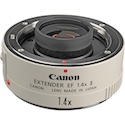

1.4x Series II Teleconverter B&H Mfr. Site VL: If you’re bringing your 70~200mm 2.8 or anything longer with you on any shoot – NEVER LEAVE HOME WITHOUT THIS CONVERTER. It turns your 200mm in a 280mm, your 300mm into a 420mm, and your 400mm into a 640mm – basically you get to one-up your lens to the next size up – while sacrificing only one stop of light – and extremely minimal sharpness. If you take good care of these converters – most would never be able to tell that they were ever used by judging the final image quality- and that’s exceptional.
Description (from Canon USA): This tele extender can be used with fixed focal length lenses 135mm and longer (except the 135mm f/2.8 Softfocus lens), and the EF 70-200 f/2.8L, 70-200 f/2.8L IS, 70-200 f/4.0L, 70-200 f/4.0L IS USM, and 100-400 f/4.5-5.6L IS zoom lenses. Superb optically, it preserves the image quality of the lens it’s mounted to and multiplies its focal length 1.4x. Effective aperture is reduced by one f-stop; autofocus is possible on any EOS camera when combined with a lens having an f/4 or faster maximum aperture. The new version II maintains the outstanding optics of the previous version, and adds enhanced weather-resistant construction, and improved anti-reflective surfaces in the barrel.
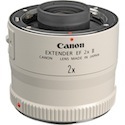

2x Series II Teleconverter B&H Mfr. Site VL: This is an excellent converter. But more often that not I’d rather crop into the 1.4X converter than lose the two stops of light.
Description (from Canon USA): This extender has been re-designed optically and offers excellent performance with compatible EF lenses (same as the Extender EF 1.4x II). Features a new seven-element design, and same weather-resistant design and anti-reflection internal construction as the new EF 1.4x II. The EF 2x II doubles the focal length of any lens it’s mounted to, and reduces its effective aperture by two stops. With the EF 2x II, AF is possible with any EOS body if the lens has an f/2.8 or faster maximum aperture, and compatible Image Stabilization lenses maintain the IS feature when used with any current EOS camera.
Suscribirse a:
Entradas (Atom)

